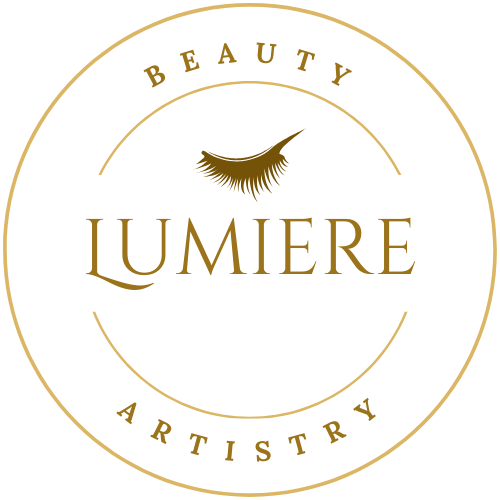
After-Care Guide
Beauty procedures require maintenance to ensure lasting and optimal results.
-
Avoid any water contact for the first 12 hours after application to ensure the optimal bonding of your eyelash extensions
Refrain from water exposure to preserve the adhesive strength of your eyelash extensions, preventing any brittleness or breakage. Avoid showering, washing your eyes, or getting the extensions wet during this period.
Wash them regularly
Incorporate daily cleaning into your routine by gently brushing the extensions with a soft bristle brush, washing them with a lash shampoo, allowing water from your shower to run over your eyes, patting dry, and finally brushing the lashes with a mascara wand.
Brush them!
Maintain the pristine appearance of your eyelash extensions by brushing them every morning. Use a clean, dry spoolie to either brush downward or comb upward for a polished look.
Use caution when using products around your eyelash extensions
Avoid any that are oil-based. Prioritize checking the ingredients of products such as foundation, eyeliner, mascara, eye creams, and makeup removers to ensure they are compatible with your extensions.
Exercise caution with makeup, particularly mascara, even those labeled as "extension-safe”
Waterproof makeup, including waterproof mascara, can compromise the adhesive on your lash extensions. If using eyeliner, choose a water-based, non-waterproof option, and be gentle during makeup removal at night. Avoid rubbing your eyes to prevent potential damage to both the extensions and your natural lashes.
-
Immediate swelling and redness are common after treatment, with the duration of settling varying based on skin sensitivity.
Around three days post-treatment, a crust may form, though many individuals will experience skin flaking or peeling during the healing process.
Typically starting on the third day after treatment, this peeling phase lasts from seven to ten days.
During the healing process, refrain from picking off scabs or flaking skin. Apply the provided cream using a Q-tip 3 or 4 times a day for 4 to 5 days, extending the duration if needed.
Avoid touching your eyebrows immediately after treatment, and steer clear of swimming or using a spa for at least 3 days.
Do not apply makeup to the treated area until it's fully healed, and be cautious when cleaning your face during the first day.
Avoid products containing Retin-A or Alpha Hydroxy Acid, as they may remove the pigment colour.
Use sunscreen to safeguard against colour fading. If there are any blank areas of pigment, this is normal and will be addressed during the follow-up appointment.
The fading of pigment is influenced by several factors, including the skin's acceptance of pigment, the extent of crust formation, and the natural fading rate of the pigments used.
Initially, the treated area appears precise and darker in colour. However, as the pigment heals from the epidermal layer, there can be a 30-40% loss of colour. Lighter brow colours tend to fade faster and may require more frequent touch-ups, potentially annually, compared to darker brow colours.
It's essential to remember that this process takes time, and immediate results should not be expected.
-
After eye lining treatment, anticipate swelling and redness, particularly on the upper eyelid, immediately following the procedure.
Itching is a normal occurrence, and the healing time varies from person to person.
For relief, consider placing wet cotton pads in the refrigerator for 10 to 15 minutes to cool and then gently applying them over your eyes.
To minimize residual swelling of the eyes, consider sleeping slightly elevated, as the most significant swelling typically occurs the morning after the procedure. It's normal to soil your pillowcase with some residual pigment on the eyes; if your eyes are stuck together in the morning, use a wet tissue to gently separate them.
During the healing process, refrain from rubbing, peeling, or picking the treated area. Avoid sun exposure, pools, hot tubs, and applying creams around the eye area. While eyes generally heal well, there is a possibility of a secondary infection such as conjunctivitis, so take precautions to prevent this.
If necessary, seek medical attention, especially if you experience sensitivity to pet dander, gardening, dust, or dirty hands. Sunglasses provide excellent protection from the sun.
Refrain from wearing makeup on the treated area until it's fully healed, and exercise caution when cleaning your face within the first day. Use a new tube of mascara after each procedure and avoid wearing makeup for at least 72 hours post-procedure.
Importantly, resist the urge to pick off scabs or flaking skin during the healing process. This helps ensure optimal healing and results.
-
After your lip treatment, expect swelling and dryness. Apply the provided aftercare ointment multiple times a day for at least 14 days to prevent dryness and interference with healed color. Use a clean Q-tip to apply ointment and avoid sun exposure, pools, and direct water pressure until fully healed. Sleep on an old pillowcase to protect linens from residual pigment.
Resist picking or scratching once your lips are no longer tender, and avoid Glycolic, Hydroxy, or fruit acid products. Brush your teeth with water for 72 hours post-treatment. You can resume wearing lipstick after your lips heal, using a new lipstick each time. Redness, swelling, tenderness, and dryness will diminish in a short period.
Lips may need 1 to 3 sessions for completion, and results vary. Hyperpigmentation and fever blisters can occur, so consult with a doctor or dentist for anti-viral medication before the procedure. Follow all instructions diligently, and schedule lip retouch sessions 30 to 45 days apart for optimal colour retention. Remember, lips heal in three stages: Too dark, too light, and just right, taking one month. Avoid friction during this time.

